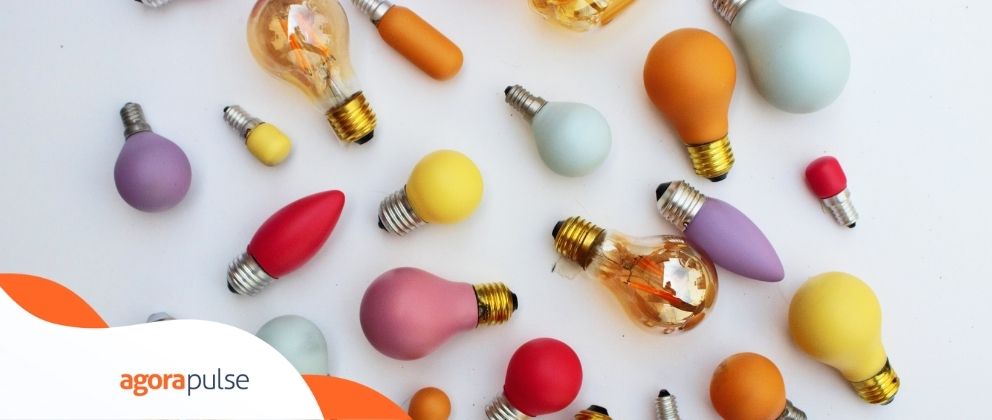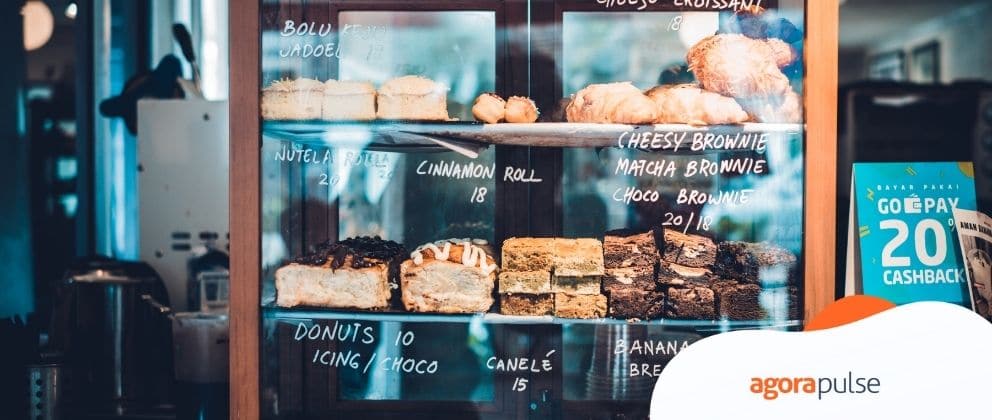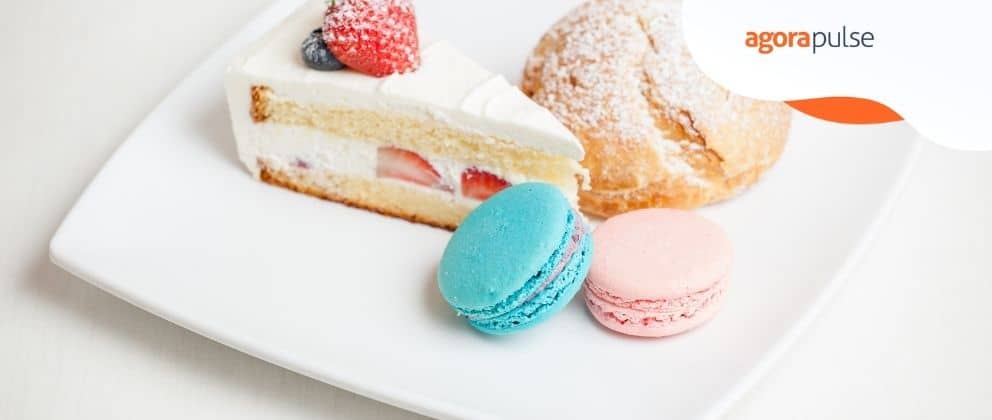Bonus Material: Free Social Media Content Calendar
Do you need to be more creative but you’re not inspired? We’ve got some tips to help you be creative when you don’t feel like it.
Creativity is key to a successful digital marketing campaign
In fact, I love social media marketing exactly for this reason: Here creativity can still win over big budgets.
But how to be more creative?
Unfortunately, it is not easy at all–especially in our industry where we have to deal with numbers and repetitive tasks daily.
In reality, social media marketing consists of dozens of micro-tasks, and the big part of a successful social media process is not to overlook any of those micro-tasks. So, a successful social media marketer needs to be very well organized to keep all those little tasks at bay.
That is why being creative is not at all easy for us: Being both well-organized and creative is challenging.
So how to maintain your creativity while being productive and well-organized?
First, let’s look at the importance of creativity then look at some tips for being creative when you don’t feel like it.
Why Is Creativity Important?
This may sound obvious: Creative people are more motivated to be creative. They are more likely to come up with original ideas to make your brand stand out in the crowd of competitors.
Yet, too often creativity is not something businesses are eager to invest in.
Creativity is not just about crafting a better copy or finding a more beautiful image.
On a broader scale, creativity results in greater market share and increased revenue, as 82% of executives agree upon, based on a Forrester survey. Yet, according to the same research, the majority (61%) of them don’t see their companies as creative.
Why the disconnect?
I don’t have a perfect answer but my personal experience is that it is incredibly hard to combine creativity and productivity, so executives tend to prioritize the latter.
After all, we need to get the job done, and that’s where we have to focus.
But what if I tell you can be both productive and creative.
In fact, you can use structure to foster creativity.
1. Structure Your Day for Brainstorms
A common belief is that structure may hurt creativity because creative minds don’t like limits.
In reality, structure may help you maintain creativity:
- It will relieve stress. (Stress-relief is so much needed this year.)
- It can help you save some time for being creative. (You can allocate some time for creative tasks or brainstorming daily.)
There’s no single way to structure your day that would work for everyone. It may all depend on your personality type.
Structure brainstorming into your day
Here are a few ways for you to try:
- Create daily to-do lists. To-do lists may be intimidating, but they have really been working for me well. The secret is to put a minimum (doable) number of tasks that need to be done fast. All the long-term (intimidating) tasks should be recorded elsewhere. I use Zenkit to create all kinds of to-do lists. But there are many more options.
- Use the “Three Big Blocks” system to organize your day. Instead of focusing on your to-do list, plan your day in 90-minute blocks (a total of 4,5 hours of intensive/boring work a day). Use breaks in between your blocks for your creative outlets (walking, reading, cooking, etc.), and then use the remaining time for purely creative tasks.
- Use daily planners. You can print a new planner a day to organize your day better. Many of these daily planners include creativity and “Me” time slots to keep you motivated.

Again, none of these systems may be perfect. I have switched among those not once in my career. One may work better for me when I am stressed, traveling, or getting ready for holidays. Others may work better when I am back to full-time working.
Structure is personal. Try different systems, and don’t hesitate to change it when you feel it’s not working anymore.
The main idea here: Your preferred day structure needs to include creative outlets and creative tasks. You don’t have to actually “create” something awesome every day (don’t feel that stressed), but give yourself that opportunity every day.
2. Remove Distractions
We love social media obviously, but it can also be a major distraction if we’re not disciplined with our time.
Often, I log in to Facebook to message a client and find myself 10 minutes later scrolling to my personal feed. I quickly close the tab, immediately recall what I was supposed to do, go back to Facebook … and start scrolling through Facebook again. This actually happens more often than I care to admit.
This wastes an incredible amount of time that would otherwise be spent on creative tasks.
It is not easy to limit distractions that happen to be your actual work. I have yet to find a solid solution here.
Depending on your daily tasks, StayFocusd (it exists both as a mobile app and as a browser extension) may be helpful. At least, you will be reminded that you are probably spending too much time on a page that is your common distraction.

If you are using the three-block day structure or daily planners (when your day is timed), set up daily reminders to be alerted of your “intensive work” periods.
Don’t allow yourself to do anything else within those time slots. It may take some practicing but it will come more naturally pretty quickly (within a week or two).
(You can also prevent too many distractions by using a social media management tool. You can do all your posting, publishing, reviewing comments, etc., from one single social dashboard instead of logging into a bunch of separate social media channels and getting sucked into the vortex of social media posts on all those platforms.)
Distractions will still happen, don’t get me wrong. But if you manage one distraction-free day, reward yourself with some time of doing nothing. (Here’s when you can watch some Youtube videos or read your Facebook feed.)

source: unsplash
3. Distract Yourself Meaningfully
Doing nothing is an essential part of being creative. All you need is to embrace doing nothing without feeling guilty.
I have realized that if my doing nothing is somehow useful to my well-being (my health, my writing skills, my outlook), I feel proud of myself, for example:
- I can walk or hike for hours while listening to audiobooks. Besides helping me stay fit, this helps my writing skills (my writing benefits through exposure to different literature styles).
- Cooking is another distraction that makes me and my family happy, so never feeling any guilt even if it prevents me from meeting a deadline.
- Dancing, hiking, sewing, etc. all those distractions are fine, especially if I combine some of them with something intellectual (e.g. listening to TED talks when crafting).
- Other people may use yoga and/or meditation as a distraction. (Unfortunately, neither fits my personality type, but I can see how both can be helpful in maintaining creativity).
- Reading is another useful way to get distracted.
Again, it is important to reward yourself with something absolutely meaningless from time to time. Watching TV shows is my guilty pleasure I am using as a reward for a productive and/or creative day. Remember your brain needs to relax, too!
4. Play With New Tools
More often than not, tools help spur my creativity. It’s the Montessori-education-based concept of doing something with your hands that comes into play here, I believe.
When you are able to build something yourself (even if it’s just a draft or a concept), you immediately feel more inspired.
Therefore, I love using all kinds of software, from content (or keyword) research to visual marketing tools. When I am stuck but have to keep “creating,” I turn to a new tool.
5. Draw Inspiration From the Art Around You
Make sure to add time in your day for browsing through various aspects of creativity. You can find fantastic inspiration in good films, shows, poetry, books, ads, anything, really.
When you see that art is all around you, you can draw more inspiration from everything around you.
For example, your favorite song (or, even better, one in a genre that you’ve ignored until now) can have lyrics or movement that can help you shape an article or even write social media captions or campaigns.
Studying the pacing and narrative of a new film can help you better dig into the pacing and narrative of your own writing.
To keep creative, you need to continually feed that creativity by looking at new forms and also beloved forms of art and artists. Never read poetry before? Maybe read a poem or two … or dig into song lyrics, which are essentially poems, too.

source: unsplash
Conclusion
Again, there’s no guaranteed way to keep yourself productive and creative at the same time. But it doesn’t mean it is impossible nor that you need to stop trying to find a solution that would work for you! May the above tips give you more ideas to try and space for brainstorming.
Get started on saving time and energy on your own social media management! Check out our free trial of Agorapulse to help you schedule, track, and measure all your social media efforts.




